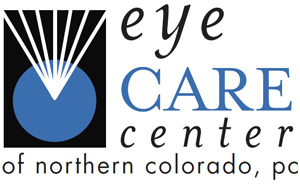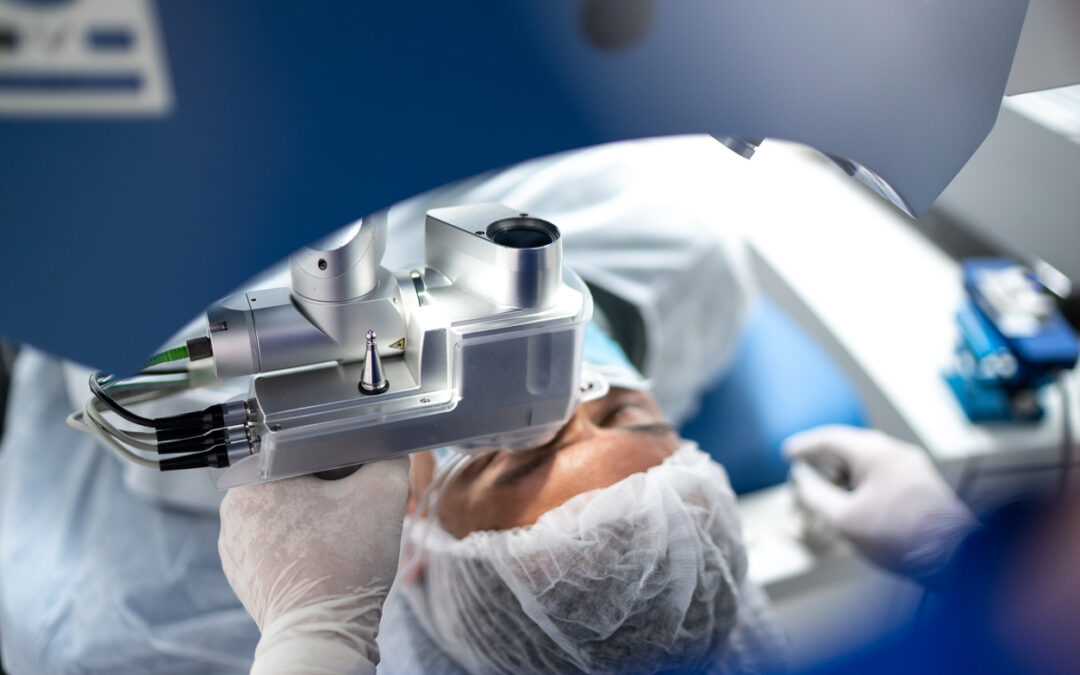About 20 years ago, advancements in medical technology managed to do something miraculous: correct your vision so you can see without contact lenses or glasses.
If you’ve been living for years with blurry vision, the idea of waking up in the morning and being able to see — without reaching for glasses or putting in contacts — may seem like magic. LASIK eye surgery makes it a reality.
LASIK has become the go-to for people wanting to be able to do their activities of daily living without the use of contacts or glasses. Since it was FDA-approved in 1999, about 10 million Americans have gone under the knife or the laser to get refractive surgery that improves their vision.
While the results of LASIK are promising and can even be life-changing, it’s a delicate procedure that requires an expert surgeon. When it comes to your vision, this is not the place to skimp and go with the cheapest option. Even the FDA warns against going with the cheapest option just to save some money.
If you’re looking to try LASIK, consider seeing someone with additional training in LASIK and learn why it’s important to invest in a quality LASIK surgeon.
What is LASIK Surgery?
LASIK stands for laser-assisted in-situ keratomileusis. During this procedure, a surgeon uses lasers to change the shape of your cornea to correct your vision.
When your cornea isn’t perfectly shaped, light can’t properly focus on the retina in the back of the eye. This is what causes vision issues including nearsightedness (myopia), farsightedness (hyperopia), and astigmatism.
LASIK can correct all 3 of these vision issues to improve your vision (in most cases) to 20/20 without the need for glasses or contacts! Most people see vast improvements in their vision as soon as the following day.
How Does LASIK Eye Surgery Work?
The LASIK procedure is a quick, 20-minute procedure. It’s an outpatient procedure, meaning you don’t stay overnight at the hospital or clinic.
Step 1: Your surgeon will give you numbing drops in your eye to reduce pain and discomfort. They’ll then ask you to look at a target to keep your eye in the same place.
Step 2: Your surgeon will cut a small flap in your cornea and use a laser to reshape the cornea. The laser removes tissue that gives your cornea its irregular shape — this is what improves your vision.
Step 3: They’ll lay the flap back into place and it will start healing within a few minutes — no stitches are needed. Most eyes take a few months to heal the corneal flap back to its new maximum strength.
The time spent cutting is a minute or less per eye for most patients. The entire procedure takes about 20 minutes.
With additional time before and after the procedure to get you comfortable, complete paperwork, perform tests, and give post-op instructions, most of the LASIK appointments at Eye Care Center of Northern Colorado take about 90 minutes.
Is LASIK Safe?
Studies have shown that 96% of patients were satisfied with the results of their LASIK refractive surgery, and nearly 95% no longer needed contacts or glasses. The majority of people who had LASIK surgery even reported that their vision was better than when they wore contacts or glasses.
When it comes to medical procedures, LASIK is safer than many because it doesn’t involve general anesthesia. That means you stay awake during the entire procedure.
LASIK comes with some potential side effects as well as possible long-term complications.
Possible LASIK Eye Surgery Side Effects
Most patients will experience some side effects that disappear after 2 to 3 days. If side effects continue after a few days, call your LASIK specialist so they can offer guidance.
Halos or Glares
- You might experience nighttime glares or halos after LASIK. Nighttime glare looks like lines or starbursts around light.
- For example, when driving, you might see additional light around the headlights of an approaching car, making it hard to see.
- This issue usually improves over 6 to 12 months after surgery.
Temporary Vision Issues
- While your eye heals, you might experience blurred or distorted vision, more frequent tearing, or sensitivity to light.
- These issues are typically resolved within a few weeks.
Pain or Discomfort
- After the procedure, you might experience some pain in your eyes.
- You might have a gritty feeling like there is something in your eye.
Dry Eye
- People who have LASIK eye surgery may experience dry eye (on average) for up to 3 months.
- This can be managed with artificial teardrops.
Irritation
- Some patients may notice pink or red patches of irritation on the white of their eyes.
Because your vision will take a few days to stabilize, you can’t drive home after having LASIK eye surgery. You may also want to avoid getting behind the wheel for a few days until you know your vision is clear.
As quality LASIK specialists, Eye Care Center of Northern Colorado has access to the latest resources and tools to reduce your side effects and help you manage them.
LASIK Surgery: Risk of Complications
Side effects of LASIK are different from complications. While side effects are typically temporary and resolve within days, weeks, or months, complications are potentially long-lasting or permanent.
Permanent complications are unlikely, and our team of LASIK specialists at Eye Care Center of Northern Colorado provide expert care that minimizes these risks.
Some possible LASIK surgery risks could include:
Permanent Dry Eye
- About 20% of LASIK patients reported dry eye 6 months after the procedure.
- In a very small number of cases, people experienced extreme dry eye due to permanent damage to their eyes.
Long-term Visual Distortions
- Some patients experienced visual distortions — like halos, glare, or rainbows — that persisted after months and years.
- One study says less than 2% of patients reported this.
Sensitivity to Light
- According to one study, about 40% of LASIK patients reported sensitivity to light that lasted years after the procedure.
Dislodged Corneal Flap
- The corneal flap made in your eye typically heals within a few months, but there is a risk of it being dislodged if your eye sustains a very specific type of trauma.
- This could occur even years after surgery.
Imperfect Vision
- No medical procedure is a guarantee, and LASIK is no exception.
- The procedure might not correct your vision, or you might need to get it again as your eyes age.
Worse Vision
- In rare cases, your vision might become worse, typically because the eye hasn’t healed properly.
Infection
- As with any medical procedure, there is a risk of infection.
The complications and risk of LASIK surgery may sound scary. This is exactly why you should see a LASIK specialist like Eye Care Center of Northern Colorado rather than going with the cheapest option for LASIK surgery. This is one area where it’s not worth cutting corners to save money!
Our LASIK specialists have the experience and education to reduce these risks as much as possible. Plus, with recent advancements in technology, modern lasers have reduced risks significantly.
Is LASIK Covered by Insurance?
Because LASIK is considered an elective surgery, it’s not covered by most insurance providers.
At Eye Care Center of Northern Colorado, we offer payment plans to help you cover the cost of LASIK. And if you have a health savings account (HSA) or flexible savings account (FSA), you can set aside pre-tax money throughout the year to save up for the procedure.
LASIK Eye Surgery Cost
The cost of LASIK depends on where you have the procedure done. Each individual clinic sets their own price, which they might determine based on location, overhead costs of the office, cost of equipment, and experience of the surgeons.
LASIK ranges between $1,000 to $4,000 per eye, with an average price in 2020 of $2,632 per eye. The price isn’t determined by your eyesight — it isn’t more expensive to correct eyes with worse vision.
But beware: LASIK is not the place to go bargain hunting. After all, what’s more valuable than your eyesight?
Some slick advertising campaigns may claim they can perform the procedure for $250 per eye. Be cautious of anyone offering something as complicated as refractive eye surgery for a few hundred dollars.
It’s worth the money to make sure your surgeon has the education and experience to perform your LASIK surgery well. Eye Care Center of Northern Colorado has been performing LASIK surgery for years using the most cutting-edge technology and safest practices. We work tirelessly to provide you with quality results at an affordable price.
In the long run, LASIK can save you money. If you add up the cost of glasses and contacts, LASIK is often the cheaper option. The cost of having LASIK on both eyes is typically equivalent to the cost of glasses and contacts for 8 to 10 years.
Curious how much you’d save? Use our price calculator to figure out the money you’d save if you switched from wearing glasses and/or contact lenses to having LASIK done. And keep in mind that Eye Care Center of Northern Colorado offers payment plans with $0 required initial payment and 0% interest.
Schedule a Consultation with the Best LASIK Surgeons in Colorado
When it comes to LASIK surgery, it’s important to go with someone you trust.
Since 2017, our LASIK success rate has been 95-100%, with 1,000 surgeries performed by Dr. Verner.
When speaking with our LASIK specialists during your consultation, don’t be afraid to ask a lot of questions. We want to make you feel comfortable and share all the knowledge we’ve gained over years and years of experience.
In addition to telling you about the procedure, we’ll explain side effects, risks, what to expect after the procedure, and how to take care of your eyes in the days and weeks following.
We’ll also be honest about whether we think you’re a good candidate for LASIK. We want to help you improve your vision and achieve the best possible outcome, and sometimes that means glasses or contacts instead of or in addition to LASIK. We are also able to perform other refractive surgeries if LASIK isn’t the best choice for your vision.
Our team values professional care and safety as our number one priority. Your vision comes first.
Reach out to us for a free consultation to ask questions, perform the tests to see if you’re a good candidate for LASIK, and learn more about what to expect.

